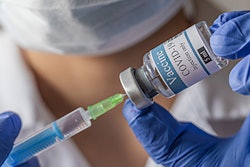
Visits to dental offices declined across the U.S. during the COVID-19 pandemic, but some states fared much better than others, according to a recent study published in the Journal of the American Dental Association. The findings suggest dental practices should consider reopening options based on location.
Researchers from the nonprofit Rand Corp. looked at changes in dental office visits by state from 2019 to 2020 using data from 45 million mobile devices. Offices in the hardest-hit states experienced more than twice the decrease in weekly visits than those in better-faring regions.
"States exhibited widespread variation in declining visits, suggesting that dental practices may need to consider different approaches to reopening and encouraging patients to return depending on location," wrote the group, led by Ashley Kranz, PhD, a health policy researcher focused on improving access to care (JADA, March 9, 2021).
Kranz and colleagues analyzed aggregated data from cellphones to understand how the COVID-19 pandemic affected the number of patients receiving dental care. They used data from SafeGraph's Core Places and Patterns, datasets of aggregate geographic and other information from smartphones.
The researchers looked at data for the first 34 weeks of 2019 and 2020. Patients made 43.3 million visits to dental offices from January 5 to August 29, 2020 -- down from 55.4 million visits in the same time period one year prior.
Dental offices experienced the greatest decline during the week of April 12 when there were 66% fewer weekly visits. During this time, most dental offices were closed to all or most patients, which could have contributed to the finding.
"Even when offices were open, patients may have canceled or delayed visits due to fear about contracting COVID-19, a fear that has been well-documented by media outlets," the authors wrote.
The researchers also used ZIP code-level data sourced from the 2019 Novel Coronavirus Visual Dashboard operated by the Johns Hopkins University Center for Systems Science and Engineering to look at more local trends. They compared the number of dental visits to pandemic severity in different localities.
In counties with higher COVID-19 rates, weekly dental office visits were 34% lower in 2020 than in 2019. The decline in weekly visits was also higher in more-impacted counties than in less-impacted ones, the authors wrote.
They found similar results when looking at state data. Dental offices in the hardest-hit states experienced declines in weekly visits of up to 53%, whereas the best-faring states experienced declines of less than 12%.
"The five states with the greatest declines in weekly visits between 2019 and 2020, ranging from declines of [38% to 53%], included California, Connecticut, District of Columbia, Massachusetts, and New Jersey," the authors wrote.
The SafeGraph data only represent about 10% to 15% of smartphones in the U.S. and do not encompass individuals without smartphones, a shortcoming of the study. The study also did not differentiate between staff and patients visiting a dental office.
The authors argued that future studies should look at a longer time period to better understand how the COVID-19 pandemic has affected dental services. Additionally, because the pandemic has hurt racial and ethnic minorities and low-income populations, future studies should evaluate those factors as well.
"Although rates of weekly visits rebounded substantially by June 2020, rates remain about 20% lower than the prior year as of August 2020," the authors concluded. "These findings highlight the economic challenges faced by dentists due to the pandemic."



















